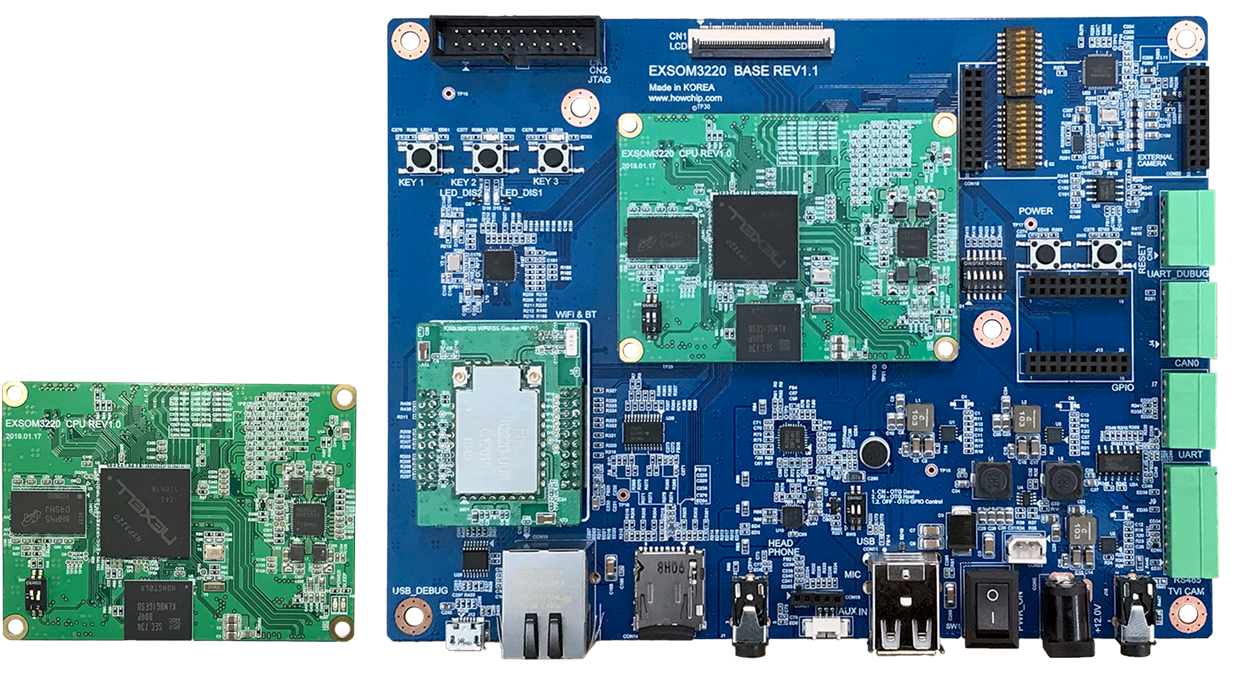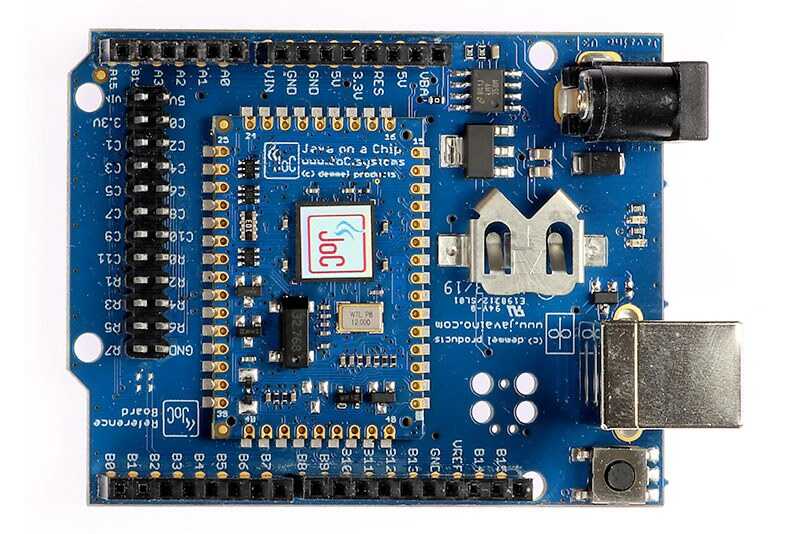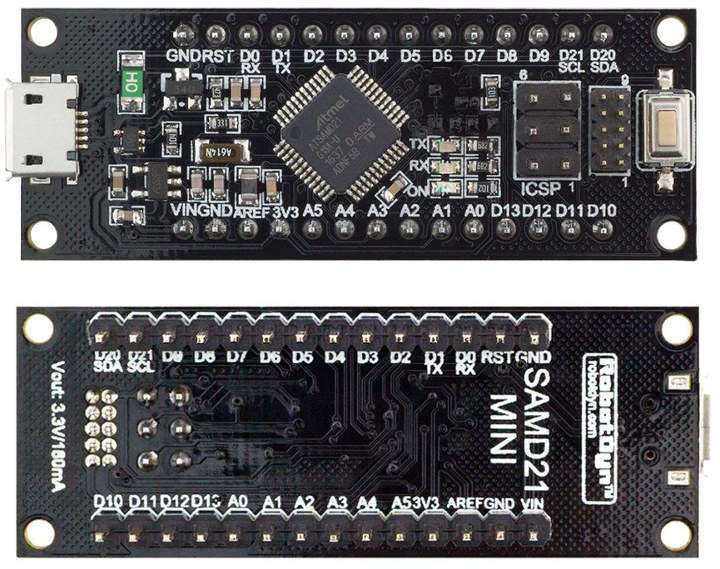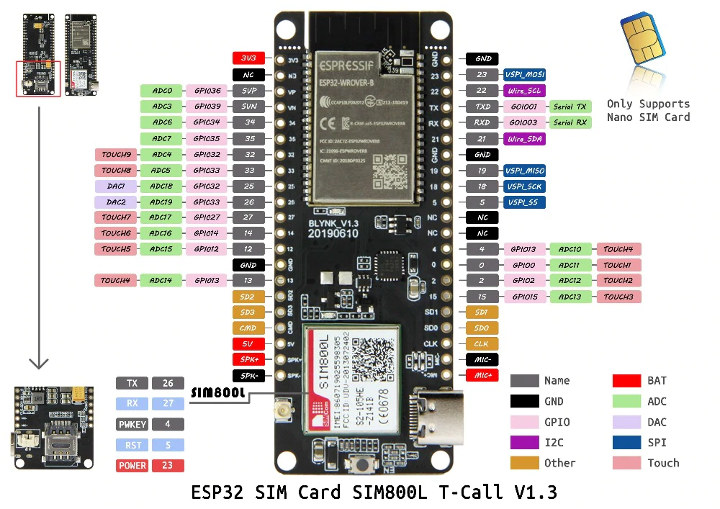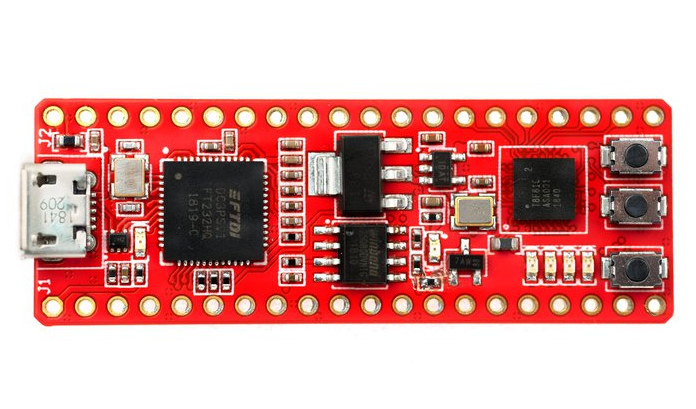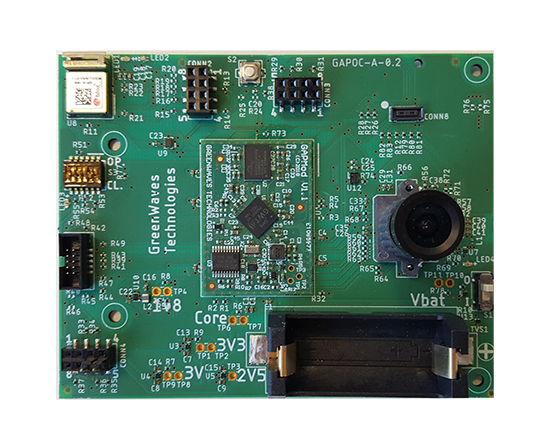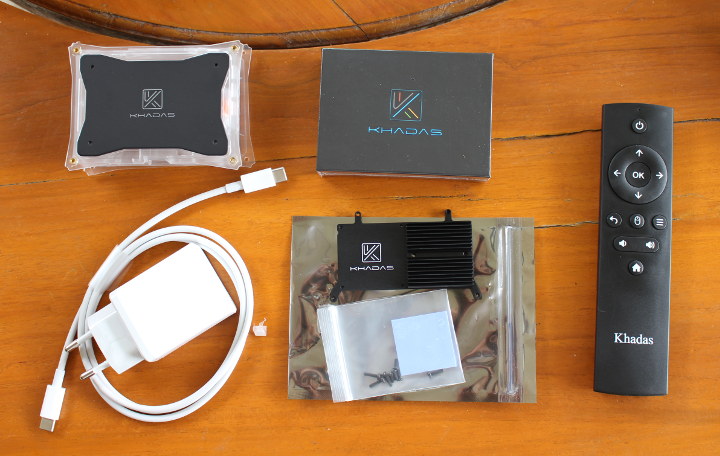Howchip has announced 2 development boards based on Nexell processors. Even though pricing is not available yet for these boards, we can now know their main features. Both development boards have been launched as COM & carrier development kits. Scorpion 3 is mainly focused for developments where a powerful dual-core Arm Cortex-A7 NXP3220 featured with Linux 4.14 can be enough, and Scorpion 5 seems to be focused for applications which may have more intensive requirements, for instance in terms of user interface, being based on a quad-core Arm Cortex-A9 NXP4330Q featured with Android Nougat and with UI specific features like 3D-Graphics Accelerator. Even though there is not so much information, Howchip also announces as “coming soon” the Scorpion 1 board, based on Exynos i T200 as an integrated IoT solution. Howchip Scorpion 3 Howchip Scorpion 3 is a great embedded computer in a board whose form factor is only 68x50mm. […]
Javaino JoC Reference Board & Module Bring Java to the Embedded World
There is a Java-programmable module on the block. The module is going to change the face of programming and make things easier. The Java-on-Chip (JoC) module was designed by the Austrian manufacturer, Demmel. This module minimizes programming and development time of smart applications. The first thing to remember is that commercially embedded systems are developed with programmable languages, and they typically employ the use of either the C language or assembly. However, Demmel has made this new module and board specifically for Java programmers. The Java-programmable module is designed to work with the Javaino JoC reference board. Another thing about the JoC module is that it radically shortens development times. Furthermore, it simplifies PCB design efforts and also reduces programming effort. Also, the Java-programmable module comes as a tiny 24 × 36-mm module. As a matter of fact, it offers a diverse selection of interface options. Now, these options can […]
SAMD21 MINI / Wemos D1 SAMD21 M0 Mini Development Board Sells for $7 and Up
Microchip / Atmel SAMD21 Arm Cortex-M0+ microcontroller has been around for several years, and we covered various boards based on the MCU include the official Arduino Zero launched in 2014, Arduino Tian, and the tiny SAM 15×15 or Exen Proto boards among others. Another SAMD21 development board has now shown up on Electrodragon website: SAMD21 Mini Development Board sold for $14.50 on the website, but you’ll also find it, under the RobotDyn or Wemos brand on Aliexpress for $7.05 and up. SAMD21 Mini Board / WeMos D1 SAMD21 M0 Mini Specifications: MCU – Microchip ATSAMD21G18 Arm Cortex-M0+ microcontroller @ 48 MHz with 32KB data RAM, 256KB flash USB – 1x micro USB port for power and programming Expansion 2x 14-pin headers with 19x digital I/O (including 12x PWM), 6x Analog I/O 3.3V logic level Programming – 6-pin ISCP connector Misc – Power, Tx and Rx LED’s, button Power Supply Input […]
$15 TTGO T-Call Board Combines ESP32 WiFi & Bluetooth SoC with SIM800 GPRS Module
LilyGo has launched several TTGO boards usually based on Espressif ESP8266 or ESP32 over the years. Here’s another that could be useful if 2G cellular networks have not sunset in your country: TTGO T-Call. The new board combines ESP32 WiFi & Bluetooth WiSoC with SIMCom SIM800L GPRS module, and also happens to rely on a USB-C port for power and programming instead of the more common micro USB port on this type of hardware. TTGO T-Call board (BLINK_V1.3) specifications: Wireless Module – ESP32-WROVER-B based on ESP32 dual core Xtensa processor @ 240MHz with 520kB SRAM on-chip, 4MB QSPI flash, 8MB PSRAM Connectivity – WiFi 4 802.11 b/g/n (2.4 GHz) up to 150 Mbps Bluetooth 4.2 Classic + LE Cellular – 2G GSM/GPRS via SIMcom SIM800L module + Nano SIM card slot USB – 1x USB-C for power and programming (via CP2104) Expansion – 2x 21-pin headers with UART, SPI, SDIO, […]
$30 FireAnt Development Board Features Efinix Trion T8 FPGA (Crowdfunding)
When I think FPGA, company names such as Xilinx, Altera (now Intel), or even Microsemi come to my mind. But there are also other companies such as Anlogic or Lattice Semi that offer FPGA chips. Today I’ve come across another FPGA silicon vendor, namely Efinix, with their Trion T8 FPGA found in XIPS Technology’s tiny FireAnt development board targeting makers and hardware designers. FireAnt specifications: FPGA – Efinix Trion T8 (T8F81C2) with 7384x LE counts, 8x embedded multipliers, 1x low-power oscillator, 1x PLL, 122.88 kbit internal RAM; Package – BGA-81 (5×5 mm) Storage – 8 Mbit serial NOR Flash Expansion – 2x 20-pin headers (soldered or unpopulated) with up to 35 GPIOs Debugging & Programming Micro USB 2.0 port via FTDI FT232HQ USB to serial chip JTAG signals in bottom layer Misc – Onboard 33.333 MHz crystal oscillator for PLL; 6x LEDs including 4 user configurable; 3x buttons (Reset, BTN1, […]
GAPPoc AI development boards based on the GAP8 RISC-V Chip
GreenWaves has developed a development board based on the GAP8 chip which can be evaluated from a GAPuino board, a generic board that can run off a low power external power source or USB and is compatible with the Arduino ecosystem. Recently the company moved beyond the generic board to the GAPPoc, platform which stands for GAP8 Proof of Concept. The GAPPoc is focused on a class of applications which can be embedded on a single board and able to carry hardware such as crystal or external memory, sensors, a radio fit, and a battery. The board will be geared towards a set of low power functions for a particular class of applications. This is a family of boards designed to increase the range of abilities in edge Artificial Intelligence. At this time there is only a single board with a platform to enhance AI, targeting Computer Vision in the […]
Programmable USB Hub Power Adjustable with Built-In Dev Board (Crowdfunding)
Capable Robot Components has launched its Crowd Supply campaign for the Programmable USB Hub in June of 2019. The hub is a feature rich and component rich USB hub that has a dev board built-in. The entire system is housed in an extruded aluminum case, with all the numbering and lettering and port attachments in brilliant white. Control power and data flow, directly through the unit. The first 40 units are sold out. There seem to be good reasons why these USB Hubs sell out fast. There was an in-depth article written on a similar hub some time ago. Inside the enclosure is an array of functionality packed neatly onto a small board. There are 4x USB 2.0 ports that are High-Speed downstream ports and 1x upstream port, a 5th endpoint on the USB hub exposes 2 12C buses via Sparkfun Qwiic connectors, the UART and 2X GPIO. The input power is […]
Khadas VIM3 Review – Part 1: Kit Unboxing and Assembly
We started to read about Khadas VIM3 in May of this year as an Amlogic S922X development board with an M.2 socket for NVMe SSD, and 802.11ac WiFi 5 & Bluetooth 5.0 wireless module. Eventually, Shenzhen Wesion decided to change the processor to Amlogic A311D before the launch last month, since it does not cost much more, but includes a 5.0 TOPS neural processing engine. The company has sent me a Khadas VIM3 kit for evaluation and review. Before going through the software part, and especially the tools for the NPU which will be one of the highlights of the board, I’ll check out what I received today, and show how to assemble the kit. Khadas VIM3 Kit Unboxing The package is rather boring… But what’s really important is what’s inside… We’ve got an enclosure, a smaller package with the board itself, a USB-C power supply, a thermal pad + […]


